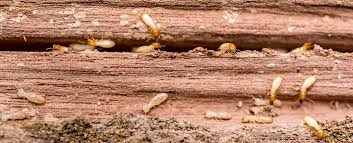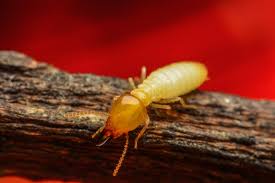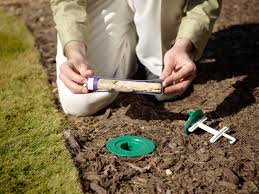The Best Strategy To Use For Termite Control Procedure
Spring time, especially a warm, sunny day following rain, is the optimal time for subterranean termite swarming behaviour and, at least for short moments throughout the daytime, a opportunity to see live termites and perhaps a particular place where they're emerging from in the home. As most dirt around a house has concealed cellulose debris (roots, stumps, or fence posts), discovering swarming termites in your yard doesnt necessarily mean your home has termites. .

Building design may add to the likelihood of invasion. Identify and fix or promote termite infestations. Ideally all wood under the building should be kept at least two inches above the soil. Consult local building codes to soil from wood for exact distances.
Keep foundation areas dry and well ventilated. By removing any wood in contact with the ground, reduce odds of infestation. Porches along with other structural or foundation wood for signs of termites. Look for tree concealed scrap wood, stored fence posts, and stumps. .

Unknown Facts About Termite Control Products
Lumber in buildings is generally hemlock Douglas-fir, or spruce. Whereas the other two aren't of these materials, Douglas-fir is moderately resistant to termites. Lumber used in foundations and other timber in contact with the soil should be treated or naturally resistant to termites and decay to help protect against damage in areas where building designs must be concrete or altered can't be used.
If susceptible wood is utilized above the wood that is treated, however termites can build their shield tubes. .
Use just exterior-grade, pressure-treated timber for areas that are exposed to weather the chemical in the timber may leach from the wood. All topical treatments that are going to be exposed to weather must also have a sealer coat to prevent leaching into the soil following rain.
The Basic Principles Of Termite Control Procedure
Subterranean termites in constructions can't be controlled using techniques that are acceptable for drywood termites, such as fumigation, heat treatment, freezing, and termite electrocution devices, since the reproductives and a large bulk of the termites are focused in nests near or below ground level from reach of those control methods.
To facilitate control of subterranean termites, ruin their shelter tubes possible to disrupt entry to substructures. .
Liquid uses of pesticides are used for termite management and applied in drenches either to the soil or by injection. There are no reliable over-the-counter termite control products most of products are for professional use only.
All about Termite Control Process
Management professionals are provided special training because of the hazards involved in applying insecticides into the soil around and beneath buildings. Programs in the wrong area can lead to contamination of heating ducts or harm to glowing heat pipes or pipes utilized for sewage or water beneath the construction that is treated.
Lately, active ingredients used to control subterranean termites were broadly classified as nonrepellent or repellent. Subterranean termites can discover repellent insecticides, generally pyrethroids; plus they are repelled without getting a dose which would kill them. Because of this negative response products containing ingredients have been phased out. .

Termite baits, which can be slow-acting insecticides shared within the colony and absorbed during feeding, are available in California. Bait is delivered inside a wood or cellulose matrix infused with an active ingredient and installed around a construction. Industrial bait products are available for use, where there is no soil for in-ground station setup.
The 6-Minute Rule for Termite Control Procedure
IGRs you could try these out have very low toxicity. The bait products that are most effective , however, are available for professional use. .
Haverty, M. I., R. L. Tabuchi, E. L. Vargo, D. L Cox, L. J. Nelson, and V. R. Lewis. 20 10. Response of Reticulitermes hesperus (Isoptera: Rhinotermitidae) colonies to baiting with lufenuron from Northern California. J. Econ. Entomol. 10 3:7 70-7 80.